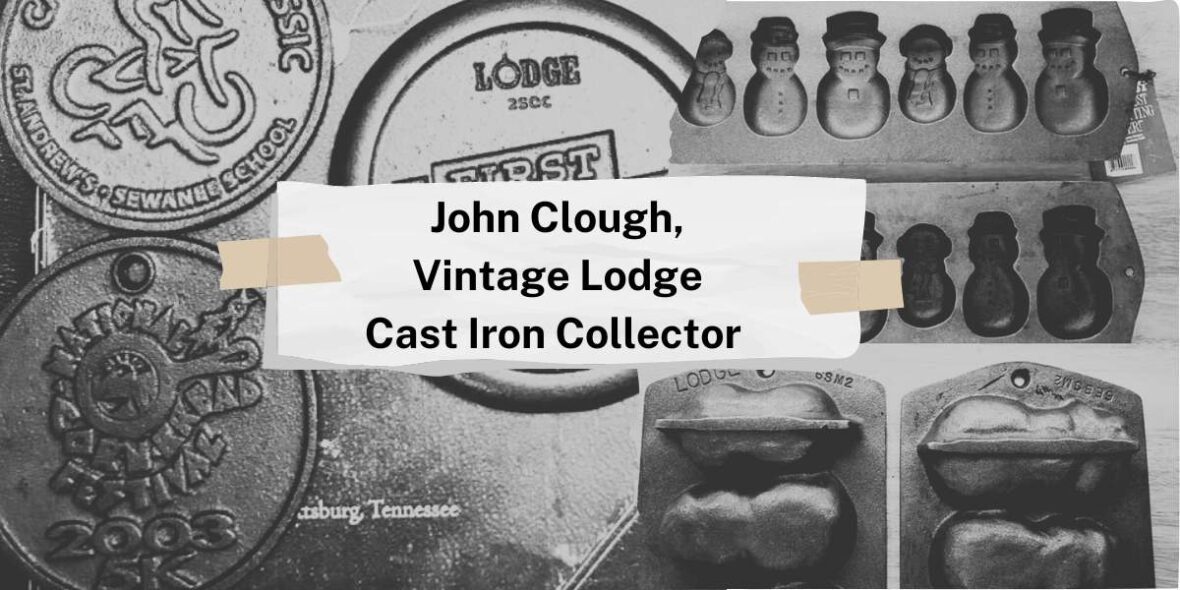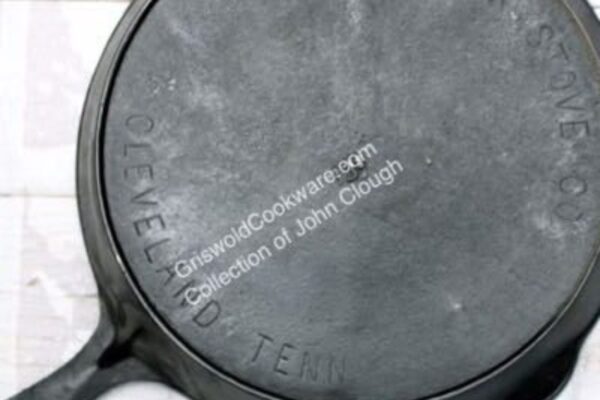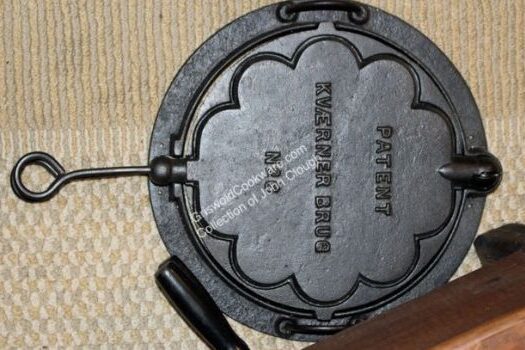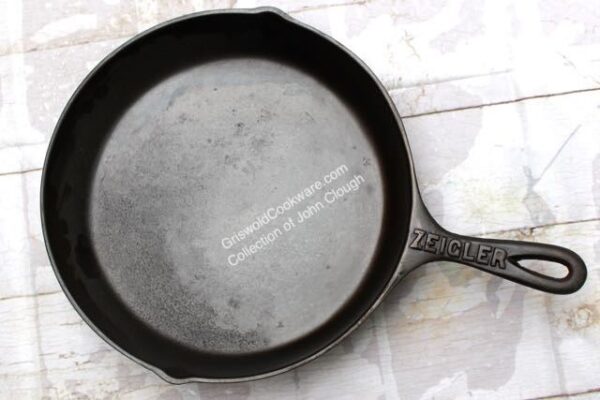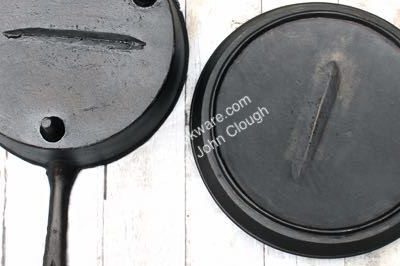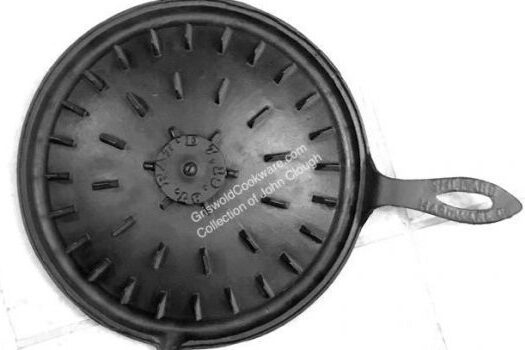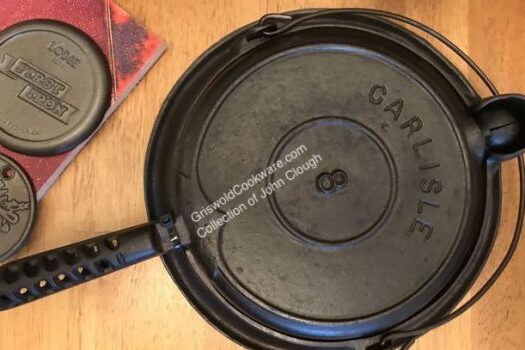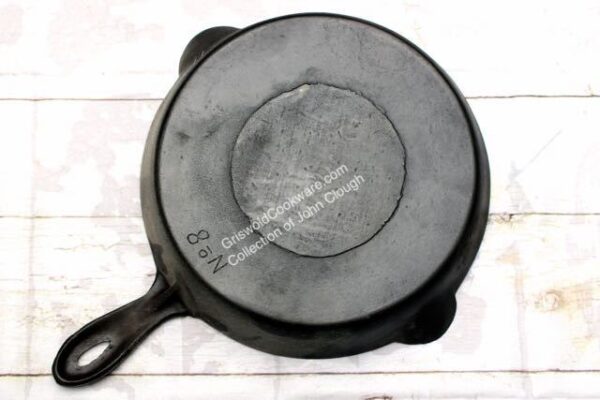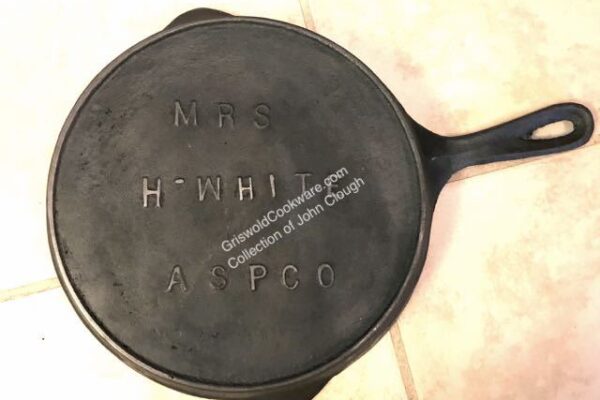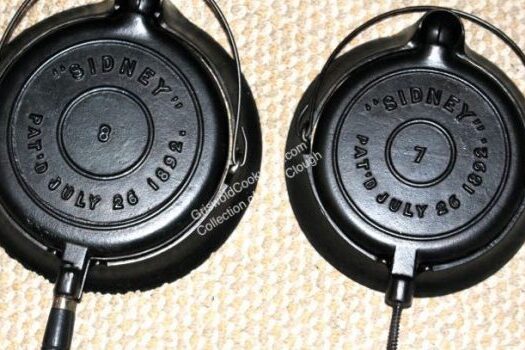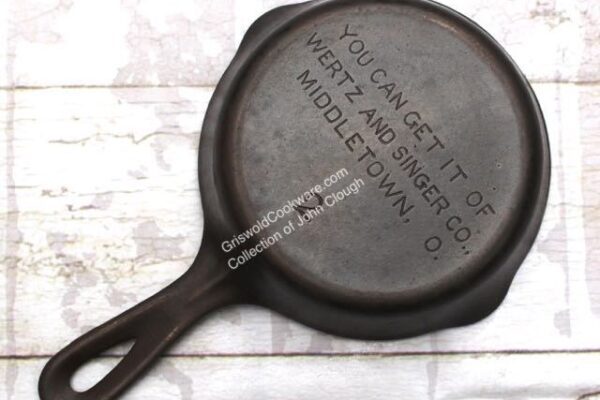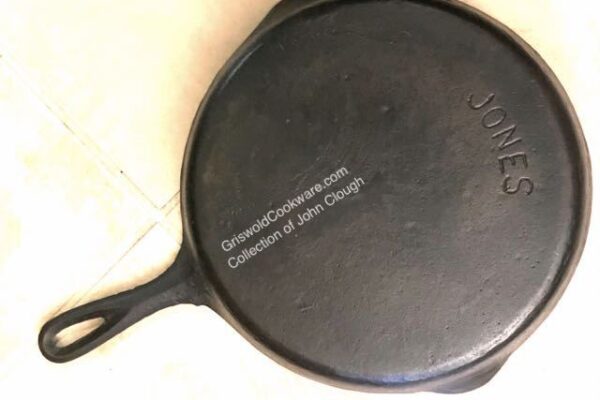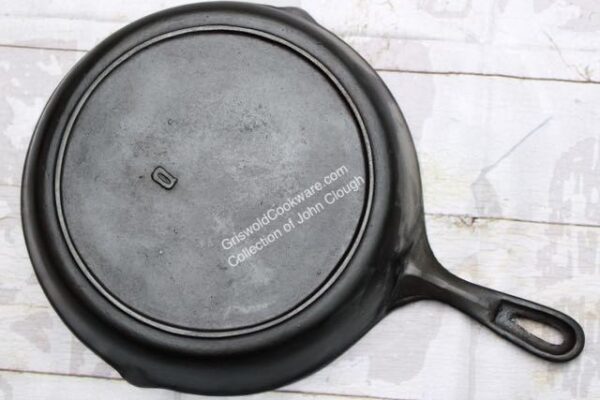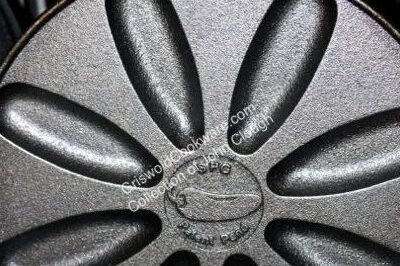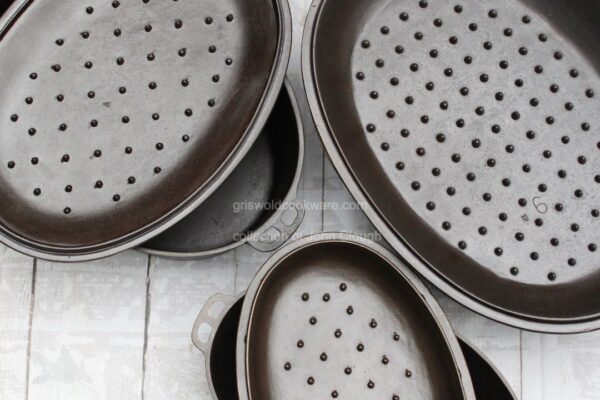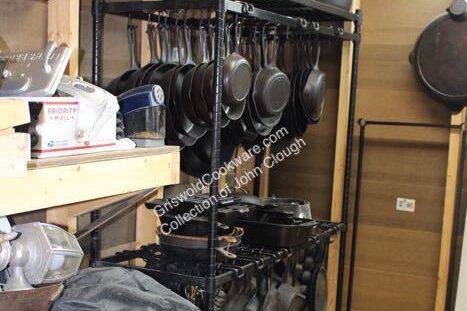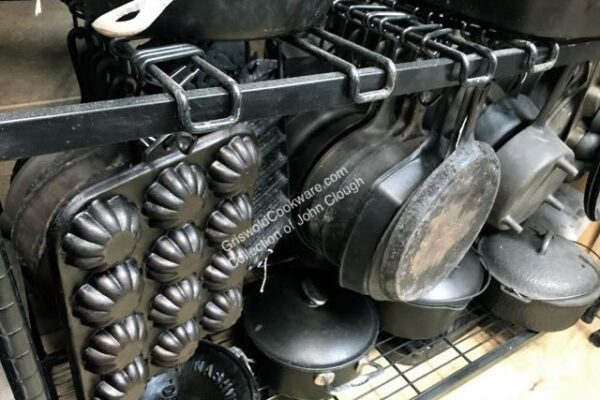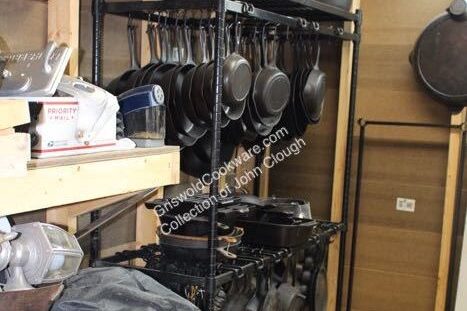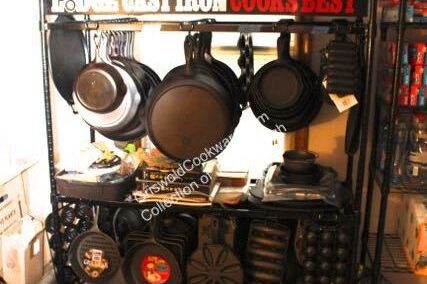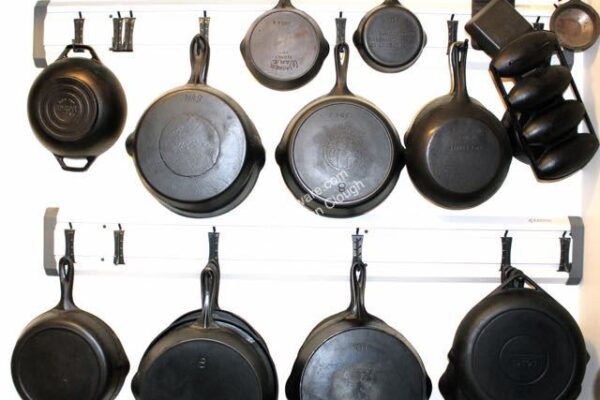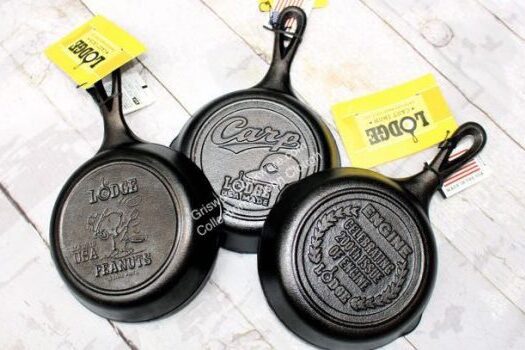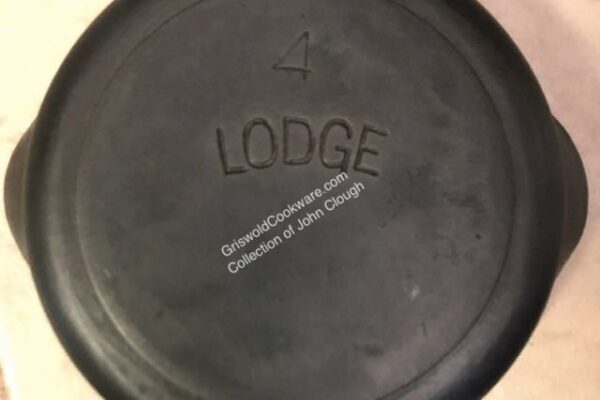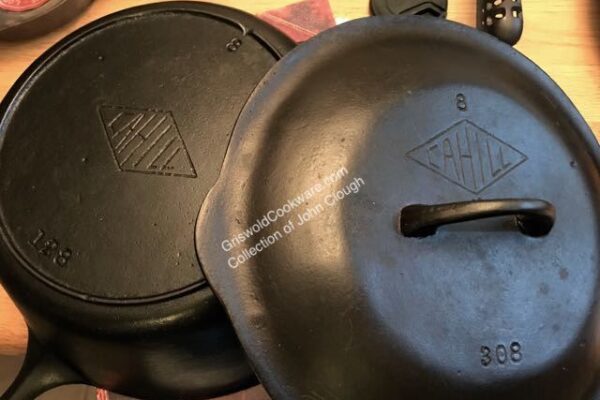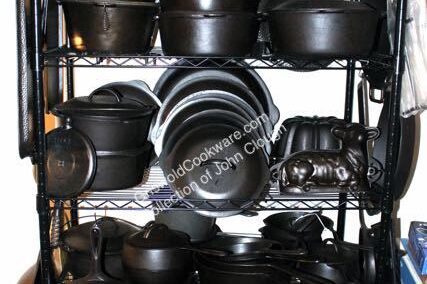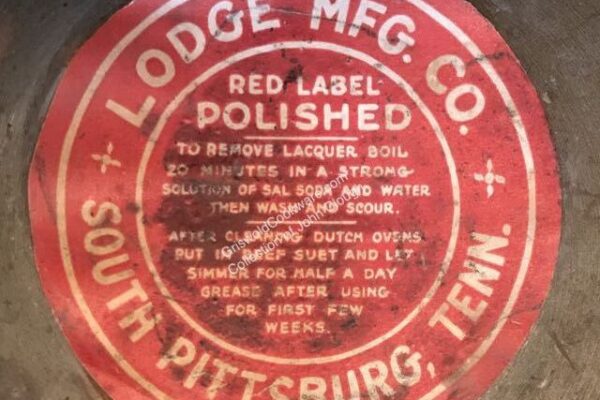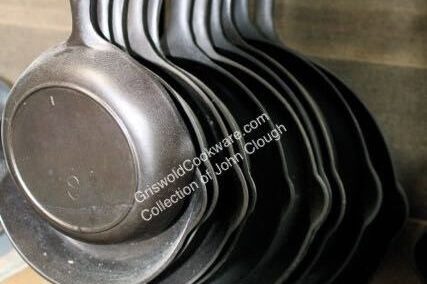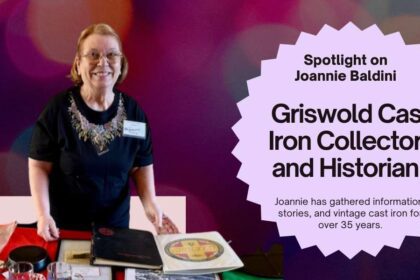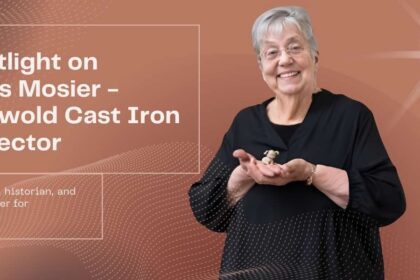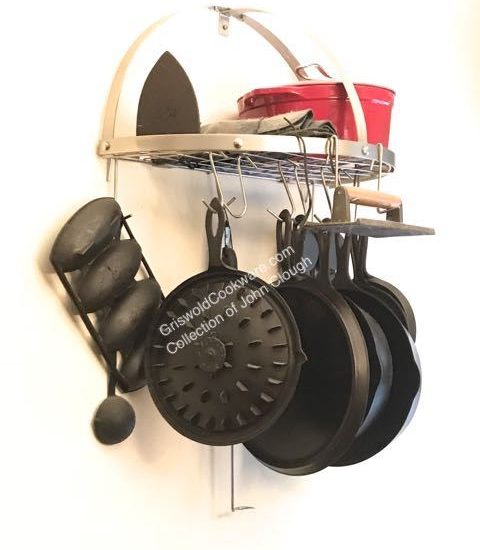
John Clough has an impressive collection of vintage Lodge cast iron. In September 2018, he graciously showed Linda and me his collection. John, his wife KT (Katherine), and their cats Oreo and Wewe live in a tidy rambler in Chester, Virginia, about 15 miles outside of Richmond. John is a painter by trade and a cast-iron collector by choice. He has collected vintage and antique cast iron since about 2013 or 2014.1 Yet, he has already amassed a large and significant collection, particularly of Loth and Lodge. John is deeply knowledgeable about cast iron and is dedicated to learning everything about the business, history, and production. He says, “I want to know everything about what I collect.”

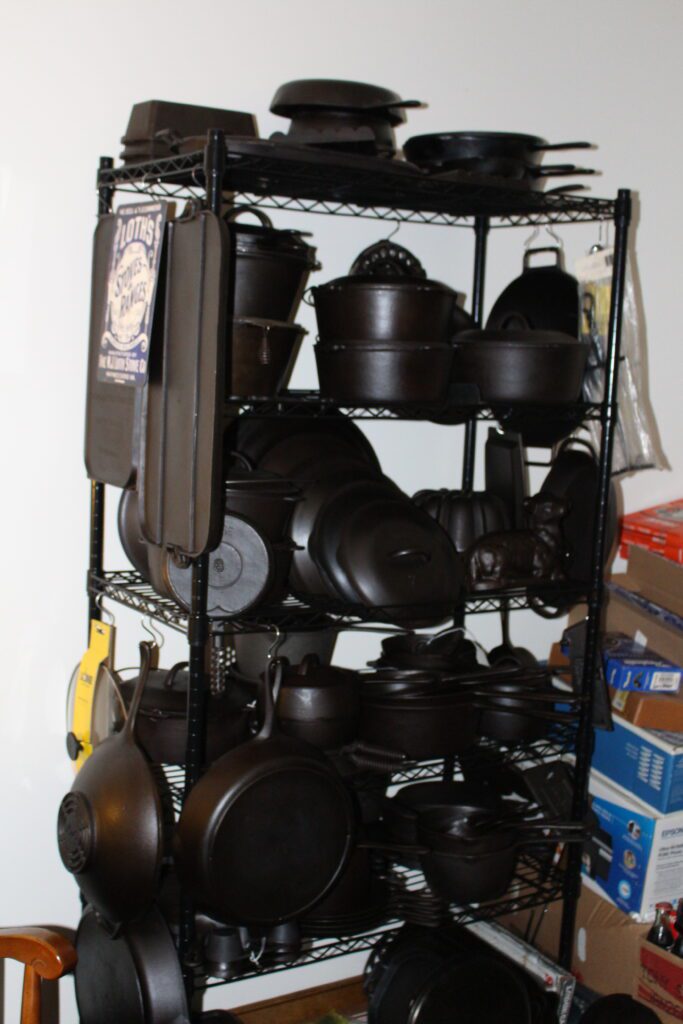
How John Became Involved in Vintage Cast Iron
When John moved into his home about 10 years ago, he found two cast iron skillets in the oven. One was a Griswold small logo number 7, and the other was a Birmingham Stove & Range (“BSR”) Century Series number 10.
John researched the history of those two skillets, and it ignited a spark. That spark grew as he watched a particular cast iron cooking show with a friend; he decided to start a collection.
John and I joked about how a “spark” of interest becomes a full-blown obsession for some of us. For John, that was indeed the case. He told me that this is how he does most things. He doesn’t do things halfway; he moves full speed ahead. Before purchasing any iron, he began researching and learning about iron manufacturers.
Why Lodge?
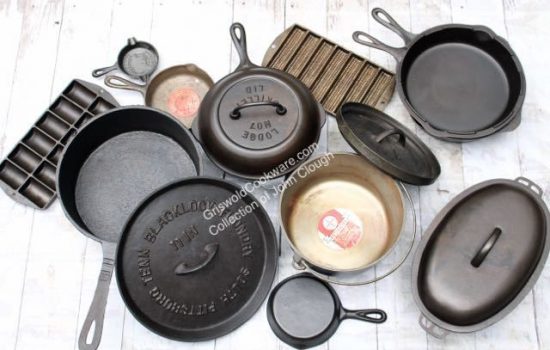
John deliberately focused on vintage Lodge cast iron when he began collecting. He figured that old Lodge pieces were more readily available than some other manufacturers like Griswold, and at least back then they were more reasonably priced. John also appreciates that he’ll never be “done” with Lodge. “I’ll never finish it in my life.”
Lodge is the longest-running American cast-iron foundry.2 Joseph Lodge founded the company in 1896, and it is still in production. John respects that Lodge is and always has been run by family members who are dedicated to protecting the Lodge name, reputation, and product.3
John the Fact Detective

John is very dedicated to his hobby. He spends about 5 hours daily on the internet, studying everything he can find about vintage Lodge cast iron. He carefully examines old pieces, looking for variations and factual explanations. He questions commonly held beliefs in his search for provable facts. John is inquisitive. He doesn’t take things at face value; he researches, investigates, and challenges statements presented as facts before accepting them. Through experience, John has found that while certain things may be given as fact, it may not be the case. As he says, “The iron won’t lie to you.”
John is inquisitive. He doesn’t take things at face value – he researches, investigates, and challenges statements presented as facts before accepting them. John has found through experience that while certain things may be given as fact, it may not be the case. As he says, “The iron won’t lie to you.”
John once located a sealed box of new old stock Lodge skillets marked with the date 1984. Given what he had read about Lodge production timeframes, John expected to find inside a set of skillets marked with the Lodge “large logo,” which Lodge began producing in 1974. Instead, he found skillets marked with the prefix “SK” (“skillet”), markings that John had previously believed were phased out in 1974.
Lodge dates of production of certain pieces
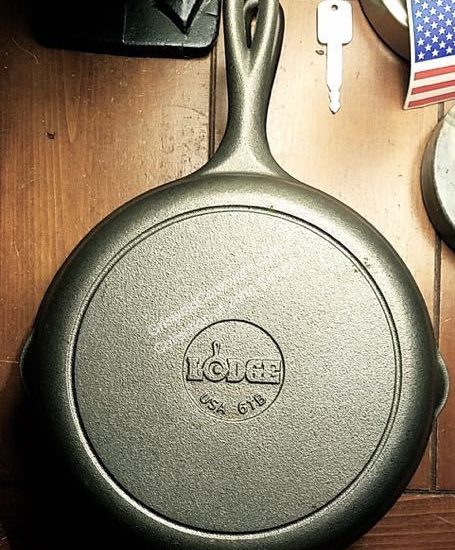
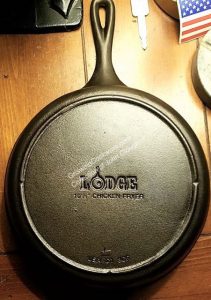
Based on certain distinguishing factors, John has independently researched the timeframe within which Lodge made certain pieces.
Lodge “SK” (or another lettering prefix such as “DO” for Dutch oven) 1965 – 1992
Lodge “Large” egg in skillet logo 1974 – 1992
Lodge “Small” (also known as “drop circle”) egg in skillet logo introduced in 1992.
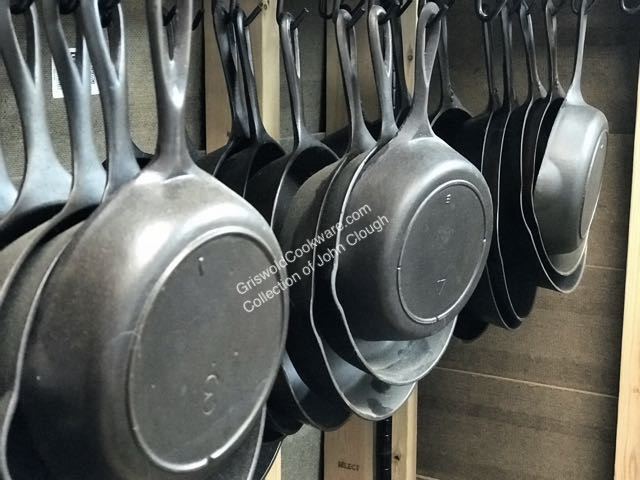
Lodge also made “no-notch,” “one-notch,” and “three-notch” cast iron skillets. The standard given timeframes are:
“No notch” 1910 – 1930
“Single notch” 1930 – 1940
“Three notch” 1940 – 1992 with some variations throughout that timeframe.
John is not convinced that these dates are accurate. He believes there was an overlap in production between the no-notch and single-notch skillets and has been studying to prove or disprove that theory. He enjoys the challenge and likes to play “devil’s advocate” with other cast iron enthusiasts.
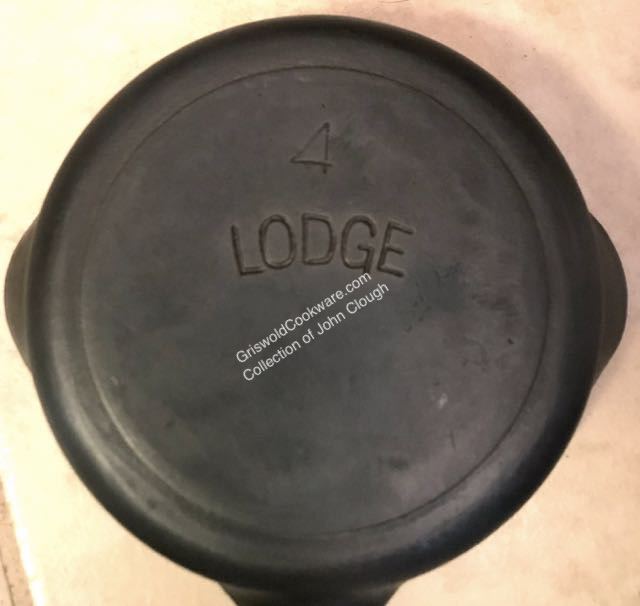
For example, to John, it doesn’t make sense that Lodge would keep the business afloat during the Great Depression of the 1930s by making novelty items such as gnomes and doorstops, as has been posited.5 John says, “If you can’t afford to put food on the table, why would you buy a doorstop?”
Vintage and antique Lodge cast iron “arc logo” pans, in single and no-notch variations, are believed to have been produced between 1910 and 1940. John is on the hunt for proof of the timeframe. He believes that arc logo production started later than currently thought.
John’s hope for a Lodge-Sanctioned Collector’s Club
John would like to see Lodge start a collector’s club where others who share the same passion for vintage Lodge cast iron can connect and share information about the company.6 John appreciates other collectors interested in the iron and its history, not just people who want to know, “How much is this worth?”
Where John finds his iron
John is well-connected within the vintage cast iron collecting community. He searches for unusual pieces, whether Lodge, Loth, or others.
John finds his iron from several different sources. He makes trades and also watches eBay and other online sources. He has “pickers” who keep an eye out for him and notify him when they find pieces he may find interesting.
When I spoke with John once, he showed me photos of a skillet that a picker had found for him. John was excited about the find and quickly told the picker to buy the pan.
John also has a friend who lives in Japan who purchases and ships Lodge products to him from Japan. I had not even known that Lodge exported goods to Japan. According to John, there is a significant market for Lodge products in Japan, and Lodge exports certain items to Japan that you cannot find and purchase in the United States. It was fascinating to see some of these products that John has acquired!

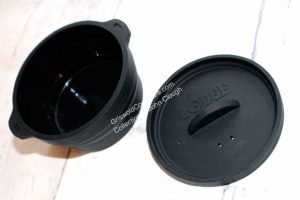
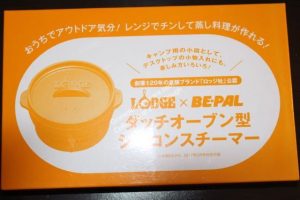
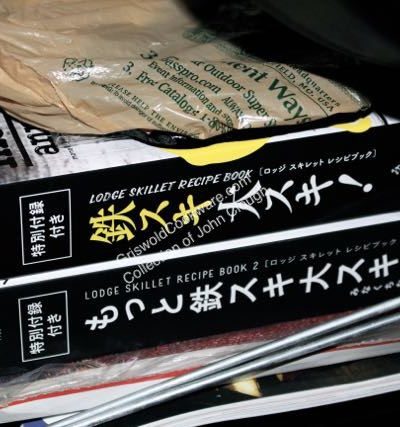
John’s advice to new collectors and where to find him with your questions
John’s advice to new collectors? Listen and learn. Focus on one manufacturer and learn all you can about the pieces. Don’t willy-nilly start buying everything you find. If you need a particular piece, wait for it. John believes in karma – if you are meant to have it, it will come to you.
John is an administrator on two cast-iron-related Facebook groups (both private groups you must join to read content): Cast Iron Friends: BSR and Lodge and Cast Iron Cookware Identification. He generously shares his extensive vintage Lodge cast iron knowledge with others in these groups. It doesn’t matter if you are a seasoned collector or new to the hobby; John will help. John’s willingness to share is illustrated by his response to me when I first contacted him out of the blue. He said, “I am a Lodge collector. How can I help?”
If you have questions about vintage and antique Lodge cast iron cookware, you can contact John on one of the Facebook pages above. He’s the one with a cartoon-type character as a profile picture. The character is a longer-haired painter wearing a bandana and wielding a paint roller extension pole as a guitar. John asked me not to take his photo on our visit – he doesn’t want to be that “out there” in public – but I’ll tell you this: he resembles his profile picture. And when I opened John’s small silicone Lodge container, it was filled with guitar picks.
Selected pieces from the collection of John Clough
- This article was initially written in 2018. It has been reworked and re-posted.
- Here is my blog post about Grady Britt, another Lodge cast iron collector.
- The first non-Lodge family member, Mike Otterman, was appointed as CEO of Lodge in 2019.
- Cahill Iron Works was a foundry in Chattanooga, Tennessee, founded in 1875.
- An older post on the Lodge Website showed a photo of some of their old garden gnomes with the following text: “During the hard times of the 1930s, the Lodge family found ways to keep doors open. Novelty items, such as cast iron garden gnomes and animals, were produced and sold to keep workers employed.”
- John told me about the “collector’s tent” that Lodge sponsored in 2017 for the first time at the annual cornbread festival in South Pittsburg. He wants to see that concept expanded and formalized into a Lodge-sanctioned collector’s club.

